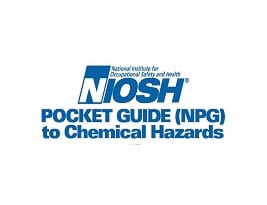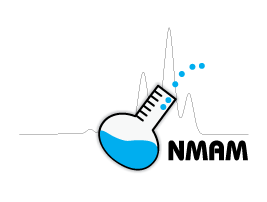Acrylonitrile

Overview
CAS No. 107-13-1
Acrylonitrile (CH₂=CHCN) is a toxic, colorless to pale-yellow liquid, harmful to the eyes, skin, lungs, and nervous system. It may cause cancer. Workers may be harmed from exposure to acrylonitrile. The level of exposure depends upon the dose, duration, and work being done.
Acrylonitrile is used in many industries. It is used to make certain plastics, rubbers, and chemicals, and in the past, as a pesticide. Some examples of workers at risk of being exposed to acrylonitrile include the following:
- Workers involved in the manufacturing of acrylic fibers and plastics
- Employees who work in the coatings and adhesive industries
- Workers in the manufacture of other chemicals like adiponitrile
- Factory workers producing nitrile rubber products
NIOSH recommends that employers use Hierarchy of Controls to prevent injuries. If you work in an industry that uses acrylonitrile, please read chemical labels and the accompanying Safety Data Sheets for hazard information. Visit NIOSH’s page on Managing Chemical Safety in the Workplace to learn more about controlling chemical workplace exposures.
The following resources provide information about occupational exposure to acrylonitrile. Useful search terms for acrylonitrile include “acrylonitrile monomer,” “AN,” “cyanoethylene,” “propenenitrile,” “2-propenenitrile,” “VCN,” and “vinyl cyanide.”
NIOSH Chemical Resources
Related NIOSH Resources
- NIOSHTIC-2 search results on acrylonitrile – NIOSHTIC-2 is a searchable database of worker safety and health publications, documents, grant reports, and journal articles supported in whole or in part by NIOSH.
- Immediately Dangerous to Life or Health (IDLH) Value Profile: Acrylonitrile – NIOSH reviews relevant scientific data and researches methods for developing IDLH values.
- NIOSH Worker Health Study Summaries – NIOSH conducts research to prevent illnesses and injuries in the workplace. The NIOSH Worker Notification Program notifies workers and other stakeholders about the findings of these research studies.
Selected Publications
- Criteria for a Recommended Occupational Exposure Standard for Acrylonitrile – DHHS (NIOSH) Publication No. 78-116. This report increases awareness and recommends work practices to reduce exposures to acrylonitrile.
- Current Intelligence Bulletin 18: Acrylonitrile
- NIOSH Skin Notation (SK) Profile: Acrylonitrile
- Occupational Health Guidelines for Chemical: Supplement I-OHG
- Occupational Safety and Health Guideline for Acrylonitrile
Related Resources
- ATSDR Medical Management Guidelines (MMGs) for Acrylonitrile
- ATSDR ToxFAQs for Acrylonitrile
- ATSDR Toxicological Profile for Acrylonitrile
- EPA Hazard Summary: Acrylonitrilepdf iconexternal icon
- EPA Chemistry Dashboard: Acrylonitrileexternal icon
- EPA Integrated Risk Information System (IRIS): Acrylonitrileexternal icon
- IARC Monographs (Vol. 71): Acrylonitrileexternal icon
- NLM Haz-Map: Acrylonitrileexternal icon
- NLM TOXNET: Acrylonitrileexternal icon
- NTP Report on Carcinogens (Fourteenth Edition): Acrylonitrileexternal icon
- OSHA Hazard Communicationexternal icon
- OSHA Occupational Chemical Database: Acrylonitrileexternal icon
- OSHA Medical Surveillance Guidelines: Acrylonitrileexternal icon
- OSHA Substance Technical Guidelines: Acrylonitrileexternal icon
- New Jersey Hazardous Substance Fact Sheet: Acrylonitrileexternal icon
- American Cancer Society: Known and Possible Human Carcinogensexternal icon
International Resources
- Canadian Centre for Occupational Health and Safety (CCOHS): Acrylonitrileexternal icon
- European Chemicals Agency (ECHA): Acrylonitrileexternal icon
- Gestis Substance Databaseexternal icon
- International Chemical Safety Cards: Acrylonitrileexternal icon
- IPCS INCHEM Concise International Chemical Assessment Document 39: Acrylonitrileexternal icon
- IPCS INCHEM Environmental Health Criteria 28: Acrylonitrileexternal icon
- IPCS INCHEM Health and Safety Guide 1: Acrylonitrileexternal icon
- OECD Global Portal to Information on Chemical Substancesexternal icon



